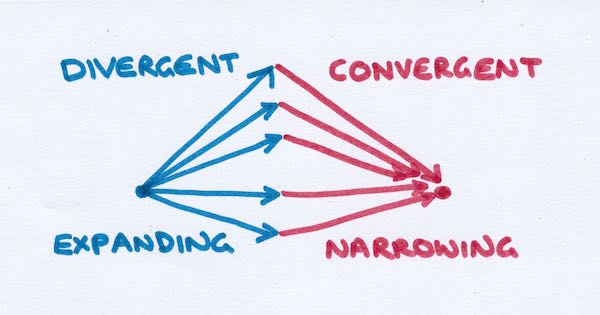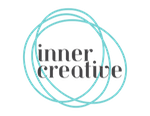Do you find it hard sometimes to come up with lots of ideas?
The issue might not be about your ability to be creative or develop new ideas, but with the approach that you’re using to get these ideas. Picking the right thinking tool is so important to getting the best result.

Imagine you have a nail that you want to knock into the wall. Now you could hit that nail with a wrench, a spanner, even the back of your shoe. They will all work to some degree. You’ll get the nail into the wall. But depending on which tool you’ve used, you’ll get different results – it might not go in straight, the nail might bend, you might damage the wall (or your shoe :-)), and it’ll take a little or a lot more effort. So that’s why when we need to get a nail into a wall we use a hammer. It’s the tool that’s built for this type of job.
This is exactly how we need to approach our thinking. We need to use the right thinking tools for the job. We have to match the right thinking approach (or tool) with the type of thinking that we need for each situation.
Our problem solving and thinking processes can be categorised into two different approaches: Divergent thinking and Convergent thinking. You use divergent thinking when you want to generate a wide range of possible solutions or ideas. This is the opposite to convergent thinking where you’re trying to narrow your ideas towards the best and one single solution.

A sketch to describe the difference between Divergent and Convergent Thinking
Convergent thinking can be thought of as linear or logical thinking. For this narrowing type of thinking we can use ranking, voting, grouping and categorising, matrix analysis, guidelines, scheduling and timelines. Linear thinking lends itself to creating dot points and making lists.
On the other hand, we use divergent thinking when we need to be more open and think more expansively. This type of thinking lends itself to more intuitive and big picture thinking tools that use colour, imagery, symbols, and metaphor, as well as other information that we collect through our senses. So drawing, building LEGO, using collage, or telling a story help us tap into this more expansive way of thinking.
The problem is that a lot of us are very comfortable and very skilled in using certain ways of thinking. More often than not we’re more comfortable using narrowing and convergent thinking approaches. We are schooled in getting the single right answer to a problem. And when you get used to using certain thinking tools then you’re more likely to use that approach to do your thinking. But it doesn’t mean that you’ll get the best result. It’s like using the back of your shoe to hit in a nail.
To avoid this problem we need to work out what type of thinking we need to do in a certain situation (Do we need to expand our options or narrow them down?) and then pick the right thinking tool.
For instance, for divergent thinking we need to give our mind new inputs and stimulation to spark off different ideas by comparing our problem to a something random like a zebra. This is very different to the focus and detail that we need for convergent or linear thinking where we use certain criteria to narrow our options down.
So this is why I beg you to not do your big picture visioning or business planning by writing dot points on a whiteboard. You will just get the usual boring top of mind stuff that you always do. Instead use collage or build your dream using LEGO to tap into more expansive thinking to see more possibilities and opportunities for your business. Once you’ve worked out your goal then you can get out your planner to work out your due date and list out your actions to get you there.
And like with anything, you just need practice to build up your skill level in using thinking tools that you’re not so familiar with (it’s like learning to write better with your non-preferred hand if you can’t write with your usual hand for some reason).
You can read more about some more expansive divergent thinking tips here:
How to find creative inspiration
How limits can be good for your creativity
And here’s a more expansive approach to identifying your values to give you easier, better decision making.
Or sign up to be the first to know details about how you can use more expansive thinking to create your very own 2016/17 “Castle in the Sky Visual Plan” for your business in an upcoming workshop later this year. You’ll also get a FREE a mini eBook called “Harness Your Characteristics for Creativity”, which gives you over 40 tips about how to be more creative based on how you like to work.
So what are you going to change about the way you approach your thinking at work or in your business?






